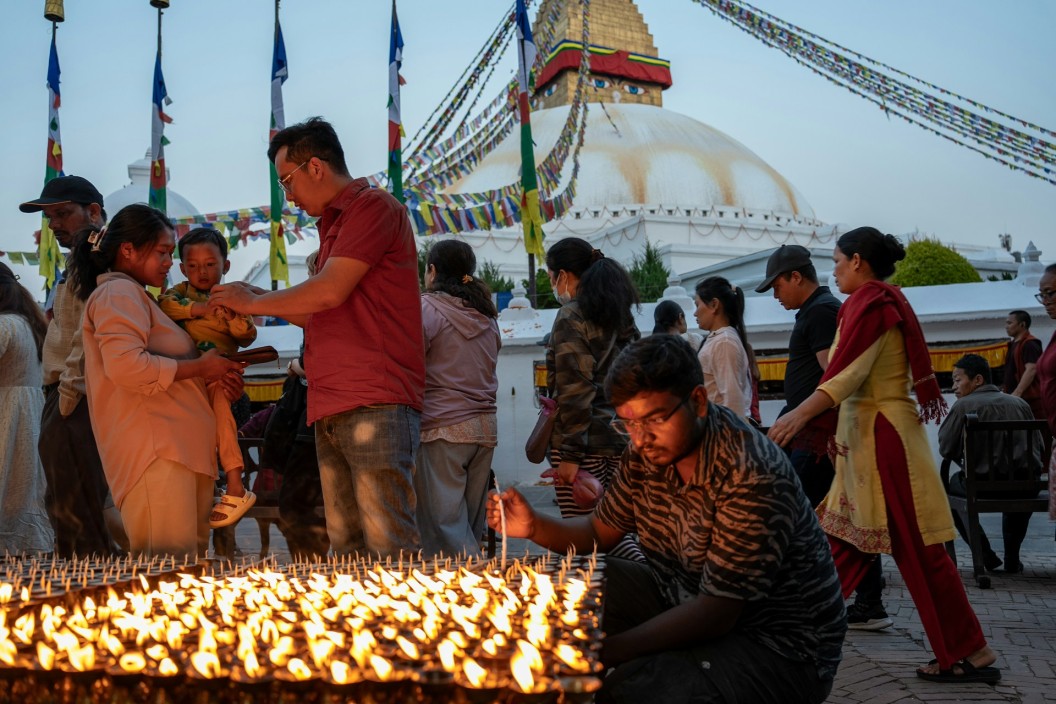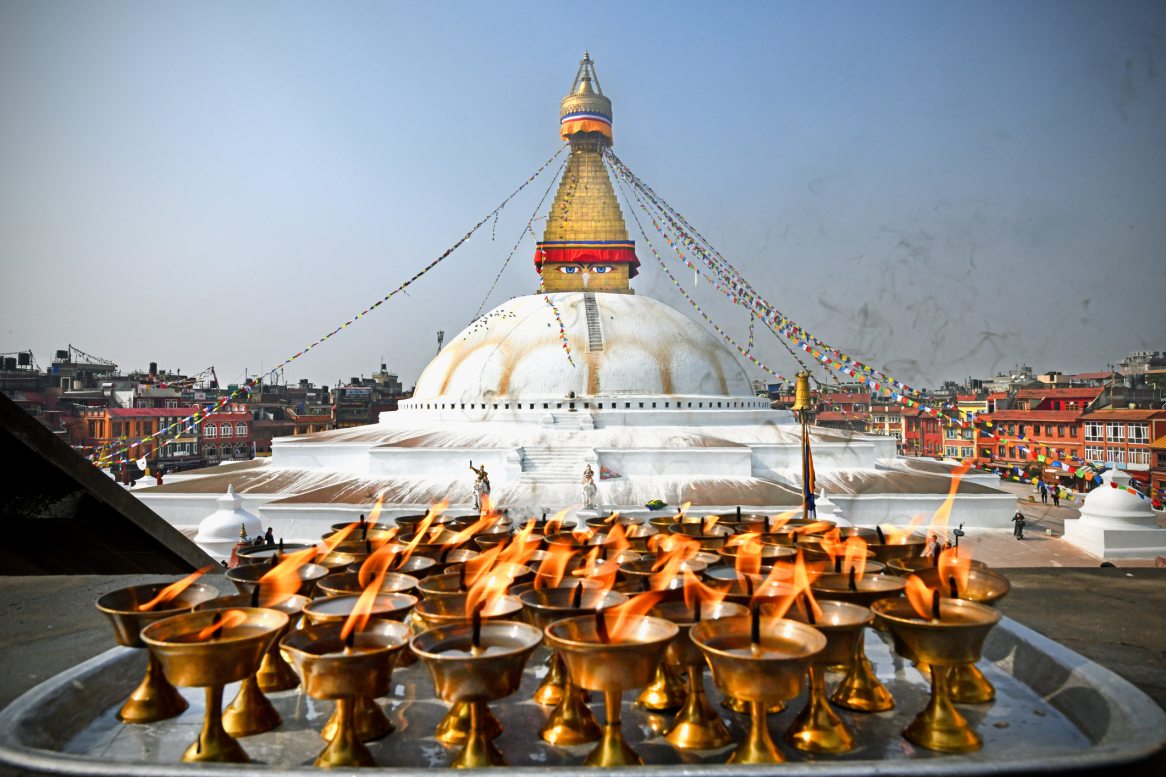In Buddhism, the offering of “butter lamps” (or oil lamps) holds deep symbolic and spiritual significance. Traditionally, clarified butter (ghee) or oil soaked in cotton wicks are used to light these lamps. They are commonly lit in temples, monasteries, and home shrines as an act of devotion. The light of the butter lamp is a symbol of wisdom and enlightenment, which represents the illumination of wisdom (prajna) and dispelling of ignorance. Ignorance is the root of suffering according to Buddhism. Hence, as the light dispels the darkness, the Buddha Dharma also dispels the darkness of delusion, which ultimately leads us to enlightenment.
According to the Mahayana Buddhism, the practice of light-offering also generates merit (punya) and “positive karma,” and acts as a practice of devotion to the Triple Gem, i.e. The Buddha, Dharma, and Sangha. Merit is an essential factor that needs to be accumulated in order to gain enlightenment. Such merit gained through light-offering is dedicated to the well-being of all sentient beings, and the deceased. Additionally, this practice also enhances the spiritual growth of the practitioners. Likewise, when used mindfully, the flickering flame of the butter lamp serves as a powerful reminder of impermanence—the true nature of life. Butter lamps also hold great importance in Tibetan/Vajrayana Buddhism, where they are used on many special occasions, such as Losar (Tibetan New Year) and Monlam (the Great Prayer Festival). Similarly, the butter-lamp also holds a significant role in Vajrayana Buddhism. Here, the butter-lamp offerings are widely conducted in a specific ritualistic manner, such as offering 7, 21, or 108 butter-lamps to purify negative karma and garnering blessings. The light-offering is, in a way, an act of generosity (dana) and compassion as well, in a sense that it is a symbol of offering the light of wisdom to all sentient beings with a wish to end their suffering.

The basis of the butter-lamp offering practice is found in numerous Buddhist scriptures. This article mentions a few of them:
The Sutra of the Merit of Lamp Offering (Gong Deng Gong De Jing) This text is found in the Chinese Buddhist canon. It describes the merits of offering lamps in general (and also, butter-lamps in particular). It mentions the merits of light-offering, brought by such offering. According to this text, the light-offering benefits both the living and the deceased, helping them attain better rebirths.
The Avatamsaka Sutra (Flower Garland Sutra): In this Sutra, light offerings are praised as a way to cultivate merit and wisdom. The sutra states that making offerings of light helps practitioners accumulate boundless virtues and draws them closer to Buddhahood.
The Medicine Buddha Sutra (Bhaisajyaguru Sutra): Here, the lamp offerings are stated as a means to pray for healing and longevity. Butter-lamps are usually lit before an image of Medicine Buddha (Sangye Menla, or Bhaisajyaguru) by the practitioners of Tibetan medicine every morning before they start their medical practice. This act is believed to bring protection, blessings and increase the efficacy of the treatment.
The Ullambana Sutra: This sutra discusses making offerings (including light offerings) for the benefit of ancestors and deceased beings, helping them attain liberation.
Tibetan Buddhist Teachings on Butter Lamps
In Tibetan Buddhism, butter lamp offerings are particularly emphasized. These are some texts:
The Ritual of Butter Lamp Offering
This text provides details of the proper methods and mantras for lamp offerings. "Dedication prayers" often accompany butter lamp offerings, such as: "By this light, may all beings' ignorance be dispelled; May the light of wisdom shine in all directions; May all suffering beings find liberation; and May all attain the omniscient state of Buddhahood."
A Simple Butter Lamp Offering Prayer
"Om Ah Hum; I offer these radiant lamps to the Buddhas and Bodhisattvas; May the light dispel the darkness of ignorance; May all beings attain perfect enlightenment; May the teachings of the Dharma flourish forever; By this merit, may I and all beings; Quickly attain the luminous state of Buddhahood."
Conclusion
The butter lamp offering is a simple yet profound practice that embodies wisdom, devotion, and compassion. Whether lit in a grand temple or a humble home, its light serves as a reminder of the Buddha's teachings and the potential for enlightenment in all beings
